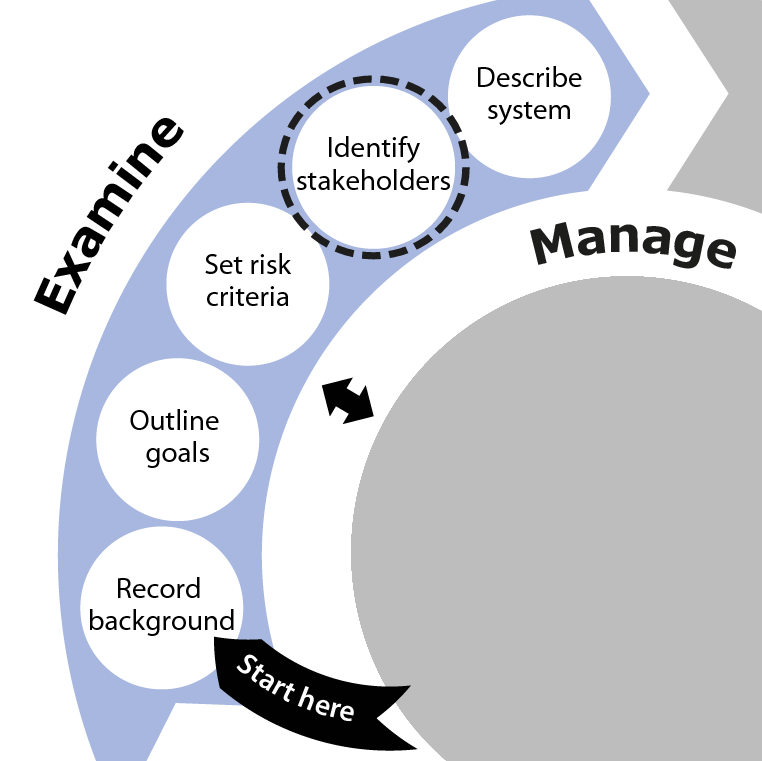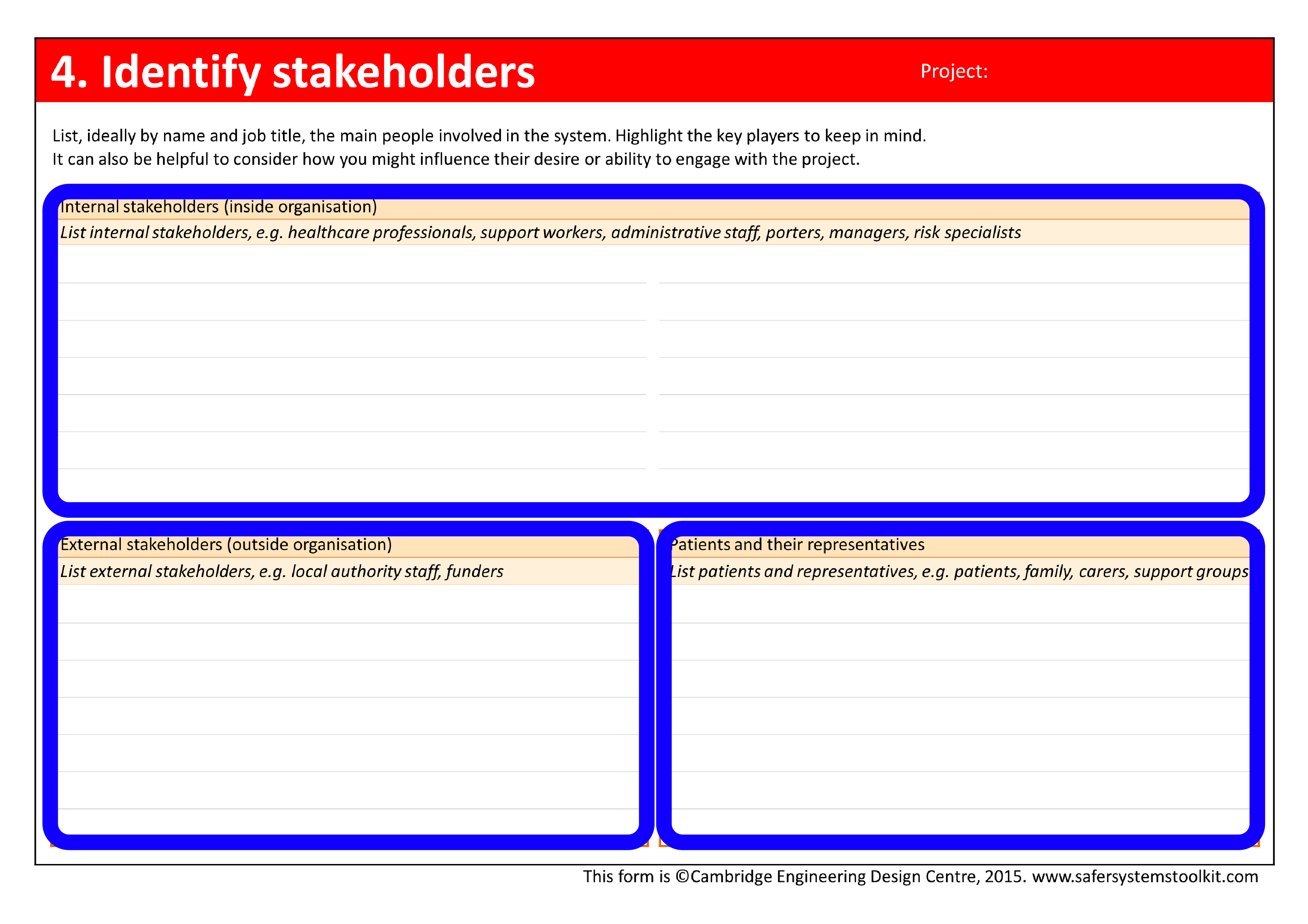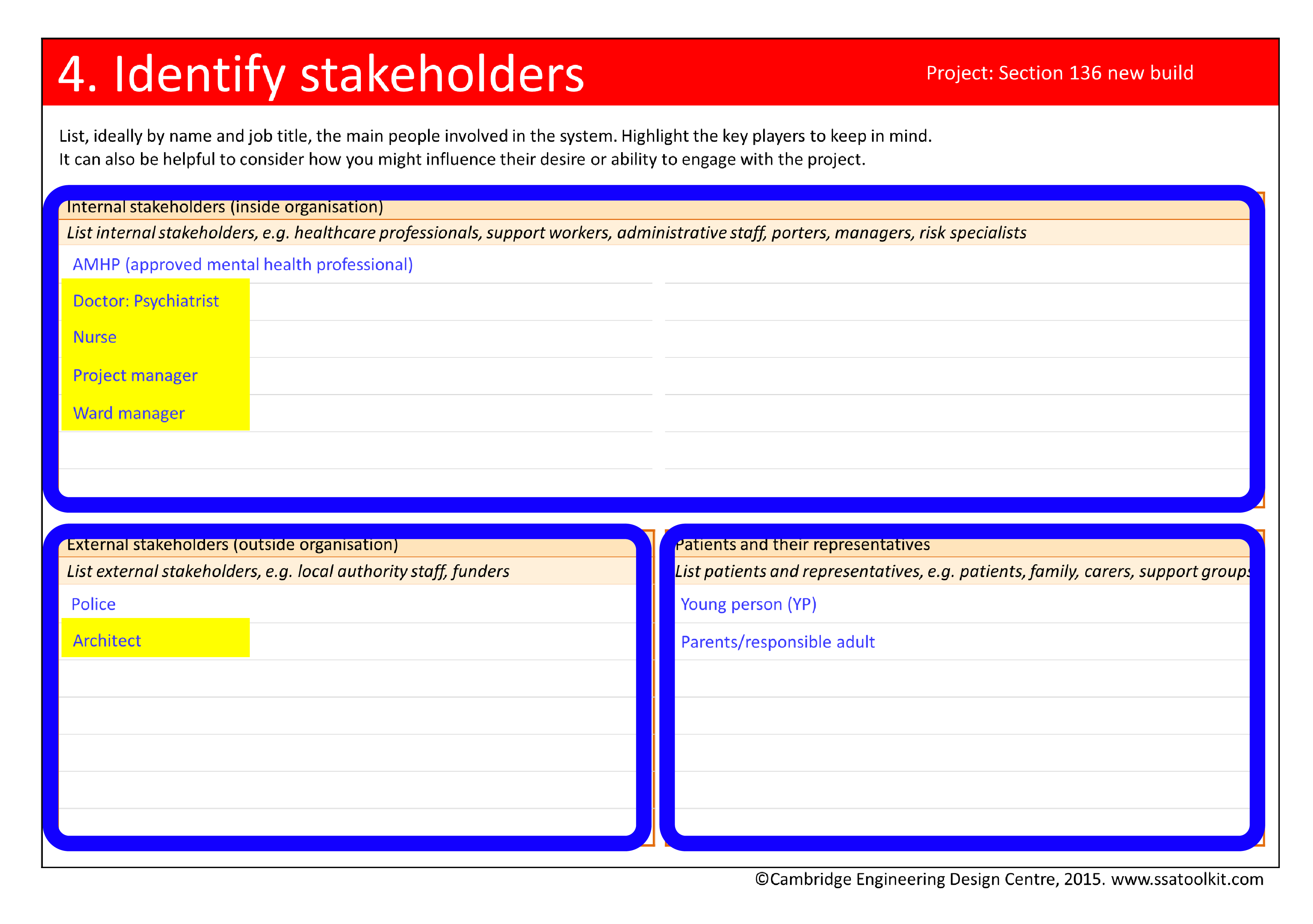Identify Stakeholders
Identifying people who can contribute to the SSA and those who will be affected by it
What is a stakeholder?
Stakeholders are the people involved in and affected by the system under examination. Healthcare systems typically involve a wide range of stakeholders who are affected in many different ways. However, the majority of stakeholders fall into one of three groups:
Identifying stakeholders
It is important to identify the main stakeholders to help ensure that everyone's perspectives are considered and that potential sources of error in the system are identified. For example, a consultant in a cataract clinic might prescribe an eye drop dispenser to their post-operative patients with limited vision. However, a patient perspective may show that the dispenser can easily be misassembled without the patient realising, making it impossible to use.
Stakeholders can be identified by examining the types of people represented in each stakeholder group. This can be assisted by looking at organisational diagrams. For example, Human Resources diagrams of organisational hierarchy can help to identify groups and types of people involved in the system. However, these diagrams may not be complete and typically only show internal stakeholders.
It may also be useful to refer back to the brief system description from Outline goals, as this may refer to key groups of stakeholders. Alternatively, it may describe some of the main processes and by reference the stakeholders involved in these processes.
Once key stakeholders have been identified, it can be helpful to describe them using personas, as in the example below. Personas are fictitious people that represent the key stakeholders. They are often described using a brief summary of their key characteristics as well as a photo or image. This can help participants in the SSA to engage with the stakeholders and consider their needs throughout the SSA.
Personas may be particularly useful when it is not possible for all stakeholders to attend the SSA meetings, or when a wide range of characteristics needs to be considered carefully. SSAs have taken place where NHS staff developed a range of personas. By developing a list of high-risk scenarios, the staff considered how, given their diverse characteristics, each persona would fare in each scenario.
Putting ‘Identifying stakeholders’ into practice |
|
|---|---|
|
|
|
Selecting stakeholders
For various reasons, not all stakeholders identified may actually take part in the SSA. When selecting the stakeholders who actually will be involved, it is worth taking some time to consider their different characteristics. This is important because stakeholders vary a great deal in terms of what they can contribute, their readiness for change and their power to make a difference. For example, a consultant may not only have a lot of influence to enable changes to a system, but also may be opposed to them. In this case it is particularly important to involve them in discussions about the SSA.
A stakeholder's influence may not be directly related to their seniority. Less senior members of staff often have an important role through peer-to-peer communication. For example, a junior nurse who is popular might well exert significant influence over other junior colleagues on their unit, and can thus play an important part in encouraging or discouraging the uptake of changes. Other stakeholders may already be in favour of the project or have little power to obstruct it.
All stakeholders potentially have a lot to contribute in terms of information on how the system operates and where the risks are located. Taking the time to consider how they can help in the different SSA activities is important.
Putting ‘Selecting stakeholders’ into practice |
|
|---|---|
|
|
|
Involving stakeholders
Once the stakeholders have been identified and selected, it is important to involve them in the SSA. This is an ongoing activity which should take place throughout all the phases of the SSA, not just in a single activity. As such, it is described in more detail in the Engage stakeholders section in the Manage phase of the SSA.
In fact, some thought may already have been given to the people required to take part in the assessment, even before the current ‘Identify Stakeholders’ activity. These people might already be present in the room. However, it is common for the ‘Identify stakeholders’ activity to highlight additional stakeholders who should be involved, and it might be necessary to schedule additional meetings to engage with them separately, as individuals or in groups.






